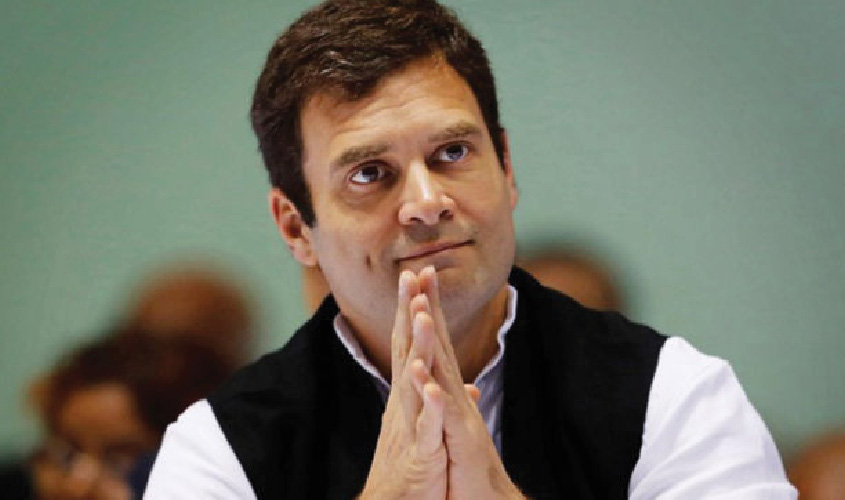Congress has been impeached from its prima donna niche in national politics.
Rahul Gandhi’s inexperience and ad hockery were brought to sharp relief in Congress’ misadventure on the move to impeach the Chief Justice of India, Justice Dipak Misra. As pointed out by Mamata Banerjee, the move was destined to fail. The West Bengal Chief Minister and Trinamool Congress supremo loses no opportunity to filibuster the Narendra Modi regime. Her political acumen, however, saw through that this move was infructuous. To begin with, the numbers on the floor of the two Houses of Parliament did not add up. Justice Misra is due to retire on 2 October: it was unlikely that the long drawn process of safeguards provided by the Constitution could have been completed in such a short time had the Vice President accepted the motion and initiated the modus operandi. Intrinsically, the move was more political in nature than a constitutional exercise. Rahul Gandhi’s inability to fathom the sonar of realpolitik was emblazoned by this move.
An offshoot of the failed impeachment move is that Congress itself has been impeached from its prima donna niche in national politics. Mamata Banerjee, who ignored Rahul Gandhi while pow-wowing with political leaders in her recent Delhi visit, has categorically stated that Congress has a place in her scheme of “Federal Front”, but not as the leader of the alliance. Mulayam Singh Yadav, whose Samajwadi Party had signed the impeachment petition, has described Congress as a “two-seat party (Amethi, Rae Bareli)”, while endorsing SP’s tie-up with Bahujan Samaj Party.
Had Rahul Gandhi constituted the Congress Working Committee (CWC) and held wide-ranging consultation within his party perhaps the misadventure could have been avoided. He shied away from holding CWC election at the party’s plenary in March. The mandate of the plenary empowering him to constitute a CWC of his choice has been ignored by him and he continues to be in the grip of a coterie whose luminaries have little connect either with the history and tradition of the Congress movement or with the party’s rank and file. Irony is that while he launched the “Save the Constitution” campaign against the Narendra Modi government, the Congress Constitution is not being implemented. This perhaps prompted Amit Shah to lampoon the move as “Save the Dynasty” expedition.
K. Raju, Sam Pitroda, Shashi Tharoor or for that matter legal eagle Kapil Sibal, who acted as the sherpa of the impeachment move, are renowned professionals, but are not political elements per se. Salman Khurshid and Ashwini Kumar, both former law ministers who have grown in Congress tradition and hierarchy, had expressed reservations on the move. So did other senior politicians. Dr Manmohan Singh recused himself from signing the petition on the plea that he was a former Prime Minister. (Nothing prevents a former PM from joining a worthy move—Indira Gandhi and Rajiv Gandhi had led the Opposition charge in their respective times. Chandra Shekhar and I.K. Gujaral remained vocal. H.D. Devegowda is yet to hang up his boots.) Abhishek Manu Singhvi signed the petition at the eleventh hour after expressing his initial reservation. The absence of a vibrant CWC (even if nominated) was most felt in the past fortnight when Congress, the party which played yeoman role in the Freedom Struggle, formulation of the Constitution and the evolution of the Republic of India, came a cropper. A Congress insider lamented that the priorities of Prashant Bhushan and Sitaram Yechury are getting precedence over Congresspersons’ thoughts. Total seats in Rajya Sabha held by the seven petitioning parties is 79—the very fact that 64 signed the petition by itself is proof of disagreement. Lack of political dialogue can be fatal for a political party.
After the Judges (Inquiry) Act was passed by 4th Lok Sabha in 1968 in May 1970, 199 MPs led by Socialist veteran S.M. Joshi sought the impeachment of Justice J.C. Shah. The Speaker, Gurdial Singh Dhillon, on the advice of Chief Justice M. Hidayatullah rejected the motion. Like Vice President M.Venkaiah Naidu, Speaker Dhillon did not feel the necessity of setting up a three-member inquiry committee to vet the charges. (Justice Shah later became CJI and was entrusted the inquiry on Emergency excesses by the Janata regime in 1977.) With this precedent of the Indira Gandhi era, the brouhaha by the Congress today is jarring.
The only impeachment move which gathered steam was the one against V. Ramaswami in May 1993.The Bar Council of Punjab & Haryana High Court had sought his removal as Supreme Court judge. Kapil Sibal appeared as Ramaswami’s counsel when Lok Sabha converted itself into a court after the three-member expert committee recommended action to Speaker Rabi Ray. 196 members voted for impeachment. Ruling Congress’ 205 abstained—the requisite two-thirds number eluded the move. George Fernandes commented: “Congress has unmasked its face and shown that corruption is its official policy.”
Under Rahul Gandhi, Congress has been critical of the Chief of Army Staff, General Bipin Rawat; of Chief Election Commissioner A.K. Joti; and now is gunning for Chief Justice Misra. Issues like unemployment, hike in fuel prices which have a cascading effect on prices as a whole, farmers’ woes etcetera have been confined to sloganeering, but have not triggered mass action. When the party held a midnight candle-light vigil against rape on 12-13 April, Rahul Gandhi, Robert Vadra and Priyanka Gandhi Vadra were accompanied by “scores of party workers”, said media reports. Rahul’s Congress today mobilises not in thousands, nor hundreds, but scores (groups of 20) of workers on issues which merit protest by millions.

